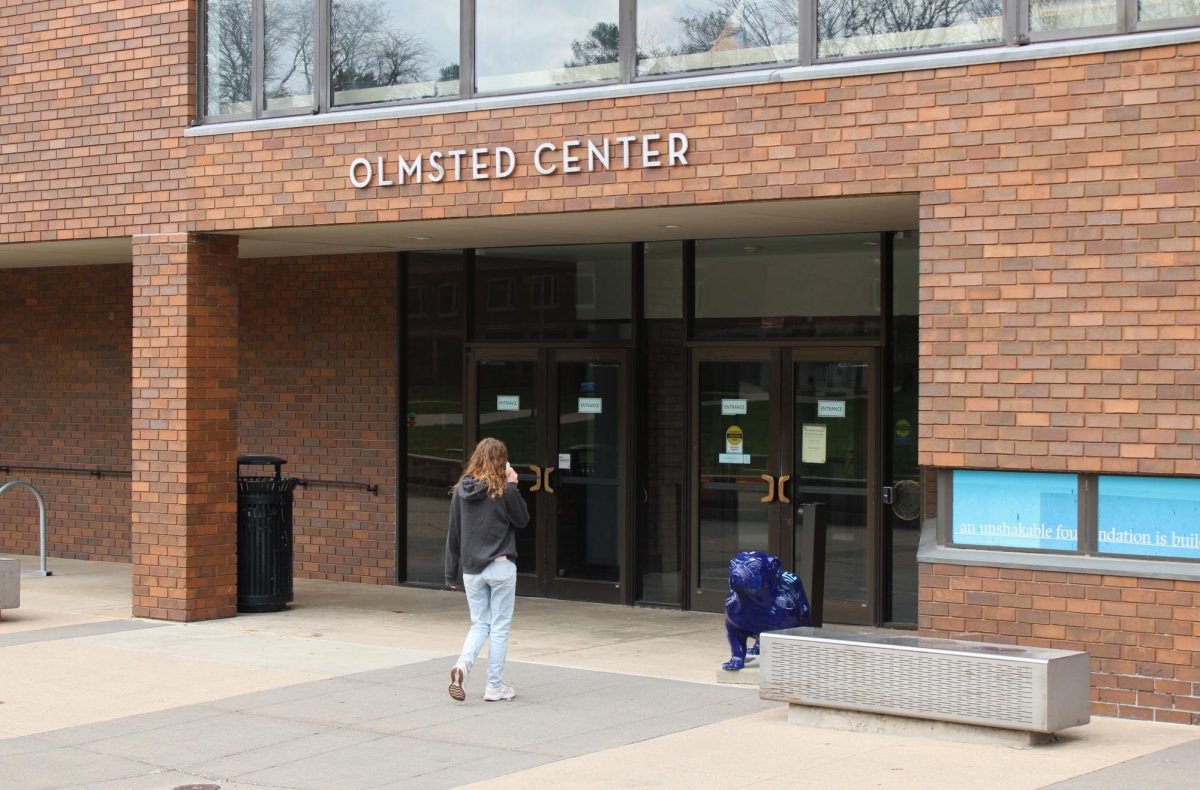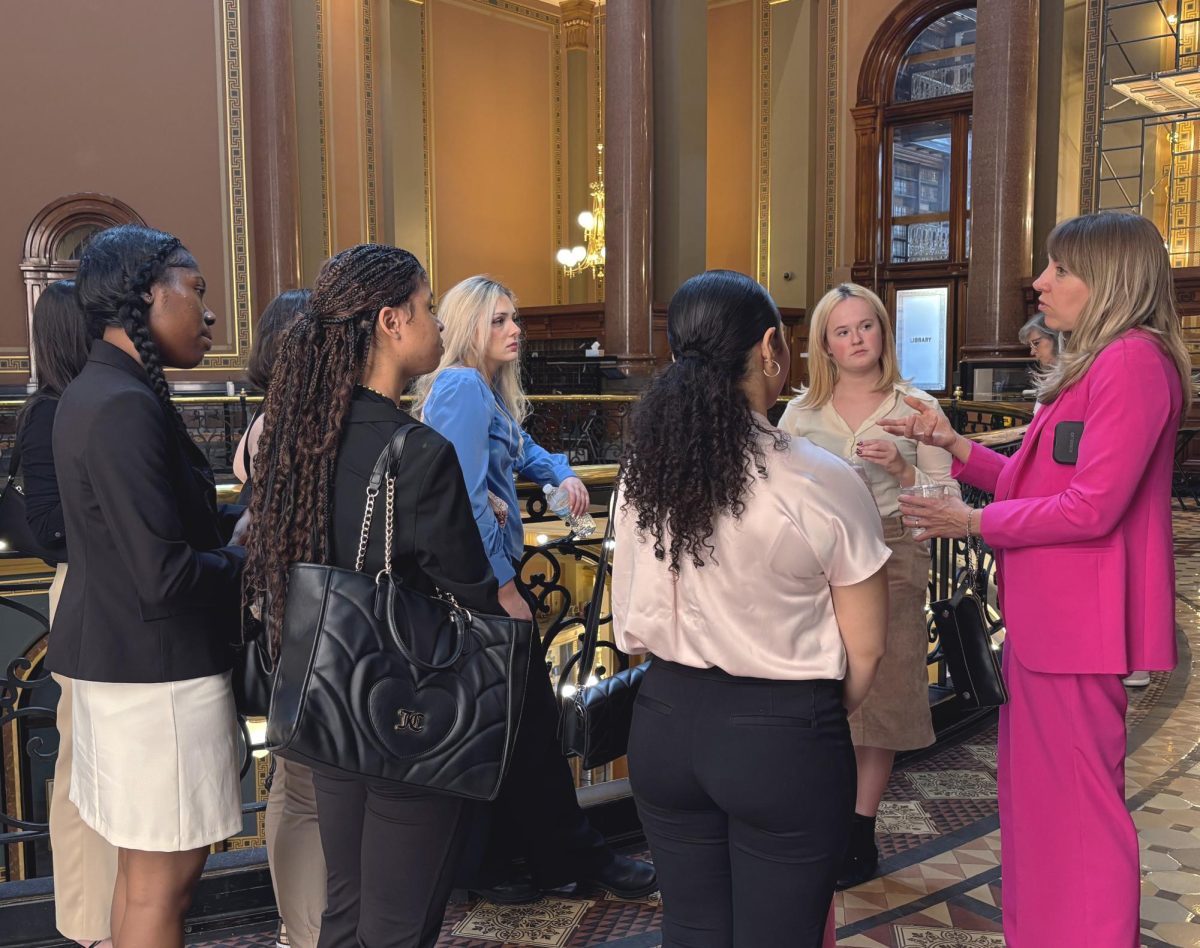By 7 a.m. on any given Saturday from May until October, Court Avenue is abuzz with Des Moines residents exploring the booths of more than 200 vendors at the city’s Downtown Farmers’ Market.
Iowans only have to wait 26 more days to search for the freshest locally grown tomatoes, the sweetest cinnamon rolls and the most vibrant flowers. The size and attendance of the market has grown exponentially in recent years, with an average of 18,000 visitors on any given Saturday. This year the farmers’ market opens on May 7.
Over the past 15 years, the number of farmers’ markets in Iowa has increased by more than 75 percent, according to the Iowa Farmers’ Market Association. Many reasons, including rising fuel and food prices, increased availability and a stronger sense of environmentalism, have contributed to the rise in markets across the state.
“I think we’re all informed enough about how when you fill your gas tank up in your car you’re using fossil fuel,” said Hilary Williams, visiting assistant professor of graphic design at Drake “That’s a very tangible visible use of fuel but I think it’s invisible in food.”
Williams facilitated an exhibit in Drake’s Anderson gallery in Sept. 2010 entitled “A Fork in the Road: The Time and The Place for Local Foods.” The exhibition used design to illustrate the growing seasons of local produce and the extensive resources used in the transportation of food.
The culture of local produce not only creates a unique, environmentally conscious atmosphere but also aids the community economically, Williams said. According to the IFMA, the presence of farmers’ markets generates $71 million in revenue for Iowa’s economy.
“We’re trying to convey the message that when you work downtown, you don’t just work in an office building, you work in an arts and cultural community,” said Glenn Lyons, CEO of the Downtown Community Alliance, in a press release. “The best way of doing that is creating opportunities for people.”
Iowa ranks fourth in the nation in amount of farmers markets according to the IFMA. With the downtown market being popular, a trial market on Wednesday afternoons will start on August 31.
As farmers’ markets increase in number, Williams hopes that the push to embrace local produce will reconnect Iowans with the food they consume.
“I think it’s something that we’ve lost,” Williams said. “You know people used to be so tied to the land and know where their food came from and when it was available. I think now we just have this culture of being able to get anything we want, any time of year we want, from anywhere.”
One way Des Moines residents can do so is through state Community Supported Agriculture programs that allow consumers to purchase fresh, local produce directly from independent farmers.
“It’s really good for the farmer because they’re getting your investment in advance of the season,” said Williams of the CSA farms. “So you’re sort of protecting them if weather or something really affects their crop production. You’ve committed to them.”
Blue Gate Farm, a small independent farm in Chariton, Iowa offers a summer membership of 20 weekly deliveries for $425 which includes fresh vegetables and occasionally seasonal fruit. Blue Gate is part of the CSA program and the downtown market.
Despite the increasing popularity of the locavore lifestyle, some remain vary of investing in locally produced wares. Williams believes uncertainty stems from a differentiation in prices between local and organic products.
“I hear price cited a lot,” said Williams regarding the hesitancy toward buying local. “I don’t think that economics needs to be as much of a barrier.”
In fact, at Des Moines retailers, prices for locally produced items like milk are lower than their mass produced counterparts. The Hy-Vee on Fleur Drive carries milk from Cloverleaf Creamery, a small dairy in Idaho, for $3.19 a gallon while a gallon of brand name milk rings up around $3.25.
In the end, the choice to go local is ultimately a personal one.
“I don’t think ethics can be something people are told to do,” Williams said. “I didn’t want to prescribe or direct anything. I want to make all this information about local foods and agriculture empowering and not paralyzing.”






